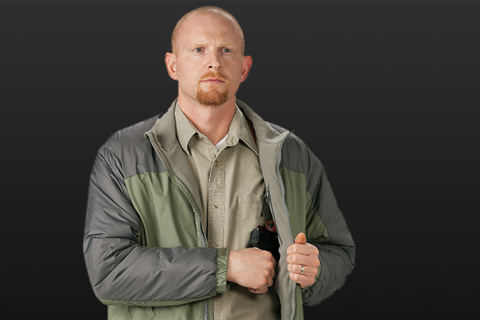
An Everyday Carry Holster Buyer's Guide
There's something to be said about the confidence concealed carry affords you. Simply feeling the weight of your handgun secured in its holster is enough to make you stand a little taller and walk a little surer.
But all that counts for nothing if you can’t get to your gun quickly should the need ever arise. This makes how you carry just as important as what you carry. There are a variety of carry positions you can use to maximize speed and concealment, and each comes with its advantages and disadvantages. What works best for someone who is on their feet all day may be uncomfortable for someone who sits at a desk for extended periods. So how do you choose? The best way to select a carry position is to consider your needs and situation.
Think About: Where you’ll be carrying. Is it for everyday use or only for specific activities like walking/jogging? And, how you spend the majority of your day. Are you outside? At work? Sitting in one place or moving around?
Let's Take a Look at the Different Types of Handgun Carry Positions
Carry on the Belt
Ideal for: everyday, walking/jogging, at the range.
Outside the Waistband (OWB) Holster – Carried on the waistline and clearly visible unless a shirt or jacket is used to conceal the firearm. Versatile and quite comfortable to wear, even over long periods of time. Offers a consistent draw stroke because it holds a gun firmly in place (while the holster may shift in other positions). However, it has a greater chance of accidentally exposing a gun and requires you to be mindful of what you're wearing.
- Strong-side carry – The gun is carried on the strong (dominant) hip or slightly behind. Works best with layered or loose-fitting clothes
. - Cross draw – Positions the holster on the non-dominant side so the carrier must reach across the body to draw. Works well if the carrier is seated, especially in a vehicle.
- Small of the back (SOB) – Worn at the small of the back either inside or outside the waistband. Works well if a carrier is standing.
Tips: Make sure your clothes cover the holster, especially when sitting or bending down and select a high-quality belt to secure your holster
Inside the Waistband
Ideal for: everyday, work.
(IWB) Holster – Sits between the body and the pants. Typically worn just behind the hip on the strong side. Many wear them in front of the hip on the strong side in what is called the appendix position.
IWB is easier to conceal because the gun is held closer to the body, and it works great if you prefer to wear lighter clothing. It also reduces the chances of accidentally revealing the holster if your clothes shift or ride up. Because the gun is closer to the body, it may not be as comfortable to wear.
Tips: Make sure your gun grip sits high enough above the belt to get a full hand on the gun for a quick, easy draw
Shoulder Holster
While carrying on the belt works well in many situations, you may find shoulder, pocket or ankle holsters more to your liking.
Ideal for: cold weather, horseback riding, work: Fastens the gun near the armpit. Usually has a holster on one side and a magazine carrier on the other. Distributes weight across the shoulders, rather than the lower back, which is more comfortable for some. Also offers fast access for carriers who are often seated and reduces printing (the outline or bulge of the gun that shows through clothing). However, this position requires a cover garment at all times and works best with open-front jackets.
Tips: Select a holster with multiple adjustment points for a near-custom fit and be sure the holster is adjusted to fit comfortably under your clothes
Cell-Phone Holster
Ideal for: everyday, work, walking/jogging: Typically worn on the belt. Looks like a cell-phone or PDA case, but conceals a small handgun instead. Inconspicuous and very comfortable, but may take some practice to draw quickly without fumbling.
- 5924 views

